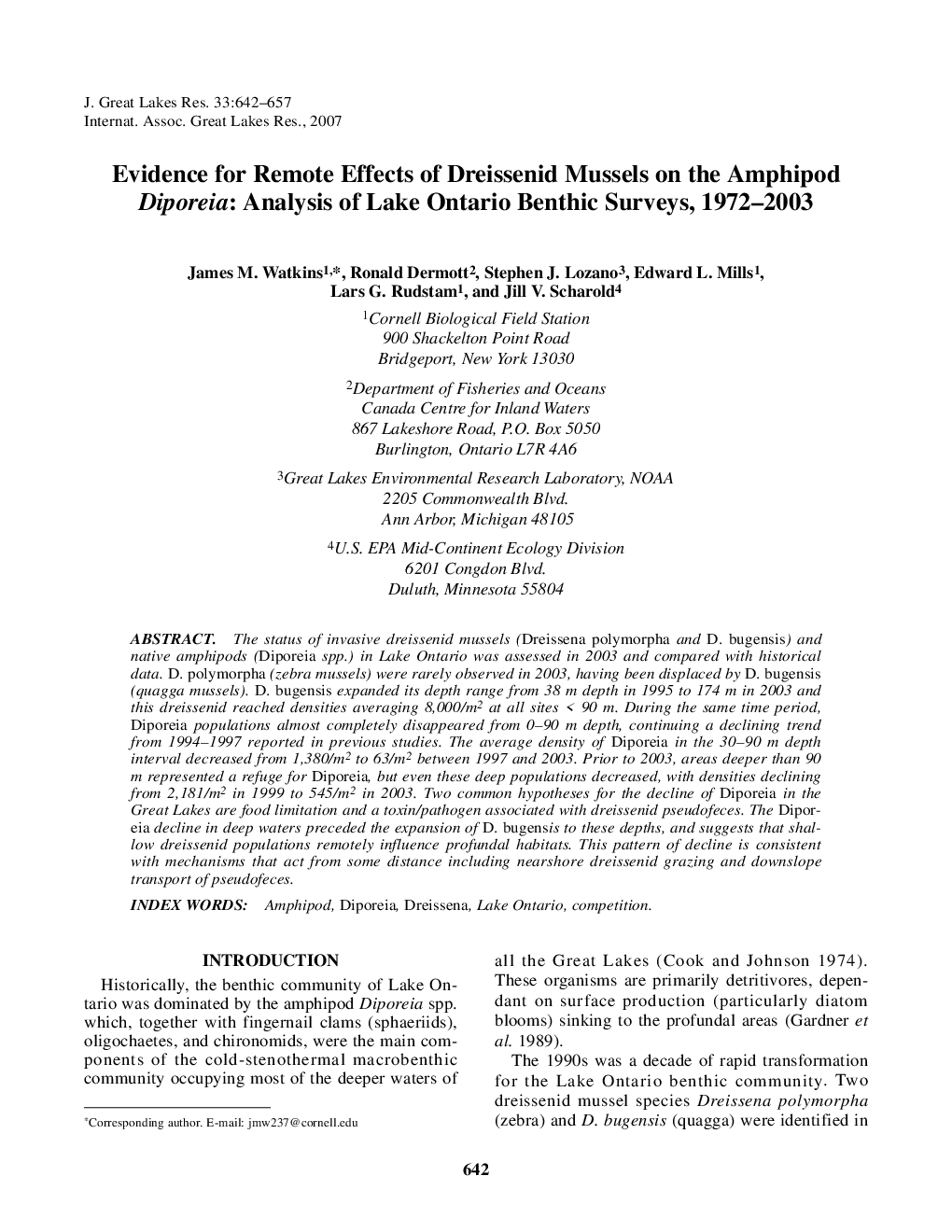| Article ID | Journal | Published Year | Pages | File Type |
|---|---|---|---|---|
| 4399435 | Journal of Great Lakes Research | 2007 | 16 Pages |
Abstract
The status of invasive dreissenid mussels (Dreissena polymorpha and D. bugensis) and native amphipods (Diporeia spp.) in Lake Ontario was assessed in 2003 and compared with historical data. D. polymorpha (zebra mussels) were rarely observed in 2003, having been displaced by D. bugensis (quagga mussels). D. bugensis expanded its depth range from 38 m depth in 1995 to 174 m in 2003 and this dreissenid reached densities averaging 8,000/m2 at all sites < 90 m. During the same time period, Diporeia populations almost completely disappeared from 0-90 m depth, continuing a declining trend from 1994-1997 reported in previous studies. The average density of Diporeia in the 30-90 m depth interval decreased from 1,380/m2 to 63/m2 between 1997 and 2003. Prior to 2003, areas deeper than 90 m represented a refuge for Diporeia, but even these deep populations decreased, with densities declining from 2,181/m2 in 1999 to 545/m2 in 2003. Two common hypotheses for the decline of Diporeia in the Great Lakes are food limitation and a toxin/pathogen associated with dreissenid pseudofeces. The Diporeia decline in deep waters preceded the expansion of D. bugensis to these depths, and suggests that shallow dreissenid populations remotely influence profundal habitats. This pattern of decline is consistent with mechanisms that act from some distance including nearshore dreissenid grazing and downslope transport of pseudofeces.
Related Topics
Physical Sciences and Engineering
Earth and Planetary Sciences
Earth and Planetary Sciences (General)
Authors
James M. Watkins, Ronald Dermott, Stephen J. Lozano, Edward L. Mills, Lars G. Rudstam, Jill V. Scharold,
